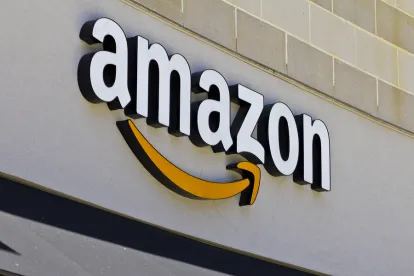In a previous article, we analyzed Amazon’s exploration of health care supply chain entry points and identified the challenges Amazon would face in attempting to become a major supplier to medium-sized and large health systems. Specifically, we noted that Amazon’s key offerings of a streamlined purchasing platform and marketplace price slashing alone may not be enough to encourage bigger health care enterprises to move a meaningful segment of their purchasing to Amazon.
While low prices are important for health care providers, they are far from the sole driver of purchasing decisions. Specifically, health care providers rely on certain guarantees of product availability, delivery frequency and timeliness, and quality from their distributors. These guarantees are hard to obtain without committing to long-term or multi-year purchasing contracts. Further, health care providers have deeply entrenched relationships with supply chain business partners who provide multiple add-on benefits such as user training, product selection, change management consulting, purchasing consulting, and analytics.
Amazon continues to press into distribution to health care providers, particularly among smaller practice settings where the buyers uniquely benefit from Amazon’s ease of use and good price points for low-volume customers. Amazon’s marketplace platform also provides a universe of helpful features, such as information on the product, its availability, and its manufacturer, as well as payment and shipping memory with order history logs. These tools help the small provider gain critical market insight while saving valuable staff time.
Amazon’s focus on this area of the market allows it to leverage its traditional strengths while gaining experience in health care and the opportunity to explore adaptations necessary for further expansion into the market. Unfortunately, the cost-savings offerings made to smaller health care providers by purchasing via Amazon are much less compelling to larger health systems that likely are able to obtain better pricing from vendors through their own buying power or through the use of group purchasing organizations. While the non-cost related challenges we identified to Amazon’s expansion are still real, there are business models that Amazon could consider to offer more compelling cost savings and compete for business from the larger health systems:
-
Pricing predictability. Amazon could use its negotiating and brand power to purchase products from suppliers for Amazon to resell on its website. Pricing would be fixed for a specific period of time and presumably would be subject to volume tiers (i.e., pricing reductions based on increases in Amazon’s purchasing volumes). Amazon’s current promise of low prices is based on real-time price comparisons that ensure a customer has the opportunity to take advantage of a low price today, but provide no guarantees on what the price will be tomorrow. For larger health systems with significant purchasing volumes and reliable needs, spot pricing is not an optimal solution. Larger health systems need some pricing predictability to better control and budget for overall spend. Further, larger health systems can offer high volumes of purchase to persuade manufacturers to provide low price commitments. Amazon would benefit from finding a way to leverage the buying power of larger health care systems by obtaining long-term commitments from those systems to purchase certain products from Amazon, allowing Amazon to leverage those additional volumes to generate long-term price savings (e.g., more than one year) based on Amazon’s volume tier pricing.
-
Rebates. Amazon could negotiate a rebate structure with the product manufacturers. At the end of the year, a manufacturer will offer credit in the form of a rebate to Amazon based on the volume of purchases made during the year. That rebate is shared by Amazon with the purchasing customers based on each customer’s purchasing volumes. This strategy meets the needs of suppliers (who benefit from the buyer’s incentive to commit their purchasing volume) and purchasers (who benefit from the cost savings achieved through committed volume). A rebate structure can act as a retroactive price lock for a certain commitment of spend.
-
Up-front payments for long-term returns. Amazon could collect up-front from customers the funds required to purchase a month’s worth of products each year. The money could be invested until it needs to be paid out in short-term, safe instruments that pay interest or provide meaningful returns. The buyer participating in Amazon’s program would order products and supplies from preapproved suppliers through Amazon, and then receive those products and supplies through Amazon directly. Amazon would use the funds from each customer to pay for the products and supplies under favorable prompt-payment terms since it has the funds for a projected month of purchases. Amazon would pay the supplier on behalf of the buyer. By getting favorable prompt-pay terms from each supplier, Amazon would make additional money on every purchase, which it could share with each buyer. In addition, the buyer would receive gains on the short-term investment of the funds earned by Amazon between receipt from the buyer and payment to the supplier under the prompt-pay terms. The investment of these funds between short-term and longer-term investments will likely generate income that can be shared with the buyers over time. This offers added value to the health care purchaser without solely relying on additional margin impact to the product suppliers. Suppliers benefit from prompt-payment guarantees and reasonable, market-consistent profit margins, and thereby benefit from this arrangement as well.
If Amazon is content with capturing the market share of providers in smaller practice settings, it will likely be very successful in doing so through its current business model. However, movement to larger-scale customers will require Amazon to shift its perspective from solely facilitating the one-off purchase. As noted above, the models we present provide Amazon with a few ideas on how to use the buying power of larger customers and the ability to pay suppliers promptly to improve their price offerings and therefore make a more compelling case for adoption by large health systems. This would be the first step for Amazon in making a compelling case to shift the purchasing of large health systems.
The next step would be combining these cost-saving strategies with other value propositions such as (1) additional services and technology to support the hospitals’ supply chains, (2) more product options, (3) reassurances for product and delivery quality measures, and (4) integration with hospitals’ supply chain information technology systems.





 />i
/>i

